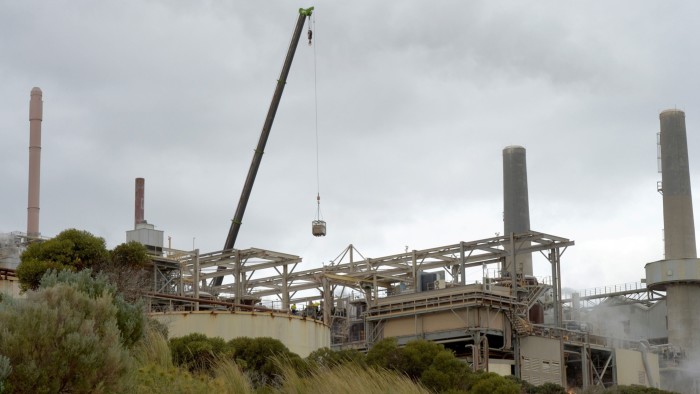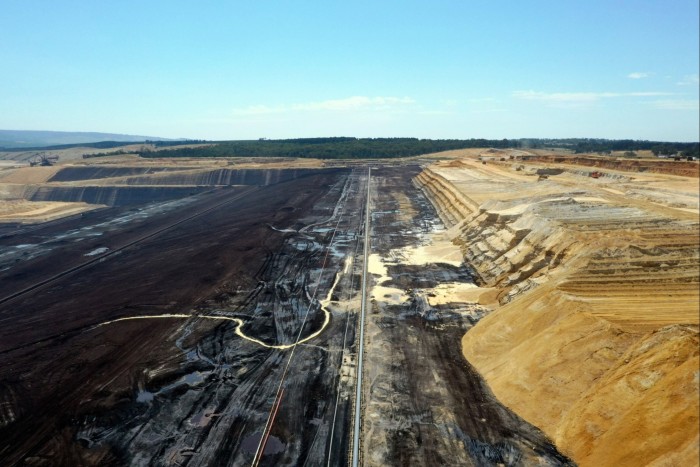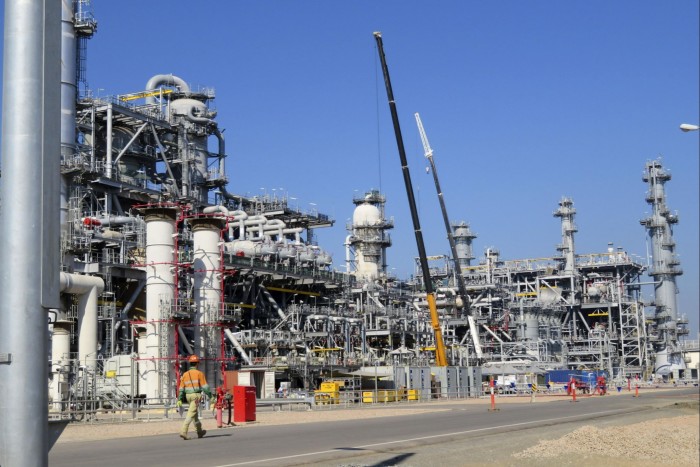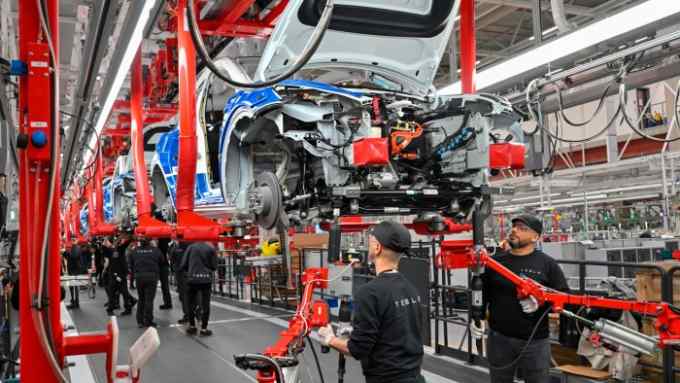Australia recalibrates safeguard mechanism to hit carbon targets

Roula Khalaf, Editor of the FT, selects her favourite stories in this weekly newsletter.
Australia’s Labor government was elected last year on a promise to end the “climate wars” that had pitched the country’s environmental activists against its powerful fossil fuel industry. Tussling over emissions rules had, said energy minister Chris Bowen, resulted in “10 years of policy dysfunction” under successive administrations.
Almost immediately, the new government raised the country’s 2030 greenhouse gas reduction target to 43 per cent below 2005 levels — equivalent, it said, to taking two-thirds of Australian cars off the road — and pledged to achieve net zero emissions by 2050, bringing the country closer to commitments made by Canada and key trading partners South Korea and Japan.
But one immediate problem was how to hit the 2030 target, given that Labor had not proposed a radical new climate policy as part of its election campaign.
The answer was to shake up an existing piece of legislation — the so-called “safeguard mechanism” — that campaigners had previously dismissed as legislative greenwashing.
Now, however, it is looking more substantial. From July, the country’s largest polluters will face steadily increasing pressure to cut emissions in line with Australia’s decarbonisation targets. Otherwise, they will have to pay to offset their emissions via the country’s carbon trading scheme.

When it came into force in 2016, the safeguard mechanism set an emissions baseline for the country’s most polluting industrial facilities — those emitting more than 100,000 tonnes of carbon dioxide-equivalent a year. Together, these account for almost 30 per cent of Australia’s emissions, and are operated by companies in sectors including mining, oil and gas, and manufacturing.
Businesses that emit above the baseline must buy carbon credits to cover the excess. Those that undershoot it can earn carbon credits, that they can trade.
Under Labor’s reform — passed in March with support from the Green party, which had initially pushed for stricter measures — the baseline shifts down year by year, so that companies must keep cutting emissions. At the same time, a cap on the number of carbon credits that over-emitters must buy has been removed. Given that Australia’s industry sector is expected to overtake its energy sector as the biggest source of greenhouse gas emissions this year, the tightening up looks timely.
Industry has broadly welcomed the move — perhaps partly out of relief at avoiding the more onerous obligations that had been proposed by the Greens, such as a moratorium on new gas projects and coal mines. Some flexibility has been built into the legislation, too, including concessions for “trade-exposed” sectors such as aluminium and steel, where prices are set in global markets.

Even gas companies, which had warned of an existential risk to new projects if the mechanism was tightened too far, have been largely positive about the reform.
In a speech in Canberra, in April, Meg O’Neill, chief executive of Australia’s largest oil and gas producer Woodside, praised the government’s pursuit of “practical outcomes” and bemoaned the years of policy “ping pong”, when politicians had “[played] to the fringes”.
Other sectors have been similarly supportive — albeit with reservations. Douglas Thompson, chief executive of coking coal producer Coronado, says there still needs to be a discussion with government about how the mechanism will mesh with the industry’s existing decarbonisation strategies.
“The devil is in the detail,” he says, noting that methods of calculating the baseline, and of measuring emissions from open cast mines as opposed to underground mines, remain outstanding issues.
In a research note issued last month, Commonwealth Bank says that coal and gas companies are likely to be hit hardest by the tougher regulations, followed by aluminium, steel and transport groups. It also highlights the introduction of a “pollution trigger” — a guard rail for emissions produced by new facilities — as a potential source of uncertainty, because it opens the door to changes to the mechanism in future if targets look like being missed.
Even so, a study by carbon analytics provider Emmi suggests that only five of Australia’s largest listed businesses — gas companies Woodside and Santos, steelmaker BlueScope, aluminium producer Alcoa (via co-owner Alumina) and mining and metals company South32 — could suffer a significant dent in their valuations if they fail to keep up with the shifting emissions baseline. This is because, unlike some of their larger peers, they have a higher proportion of facilities in Australia, and so their compliance costs relative to value will be higher.
As this finding implies, Australian businesses’ carbon footprints are not confined to Australia. Alex Hillman, lead carbon analyst at shareholder advocacy group the Australasian Centre for Corporate Responsibility, points out that the safeguard mechanism does not address the fact that Australia, in effect, exports most of its emissions in the form of fossil fuels and iron ore.
“Our exports are the billion-tonne elephant in the room,” he says, adding that Labor’s reforms will not transform Australia into a leader on climate change, despite support for such ambition during last year’s election.
Hillman also cites the potentially unlimited use of offsets — including schemes that generate carbon credits through eco-friendly agriculture — as a flaw.
“The rest of the world has realised that planting trees and making steel are different things,” he says. “Regenerating our land sector is important, but it is not the way to reduce industrial emissions.”

Comments